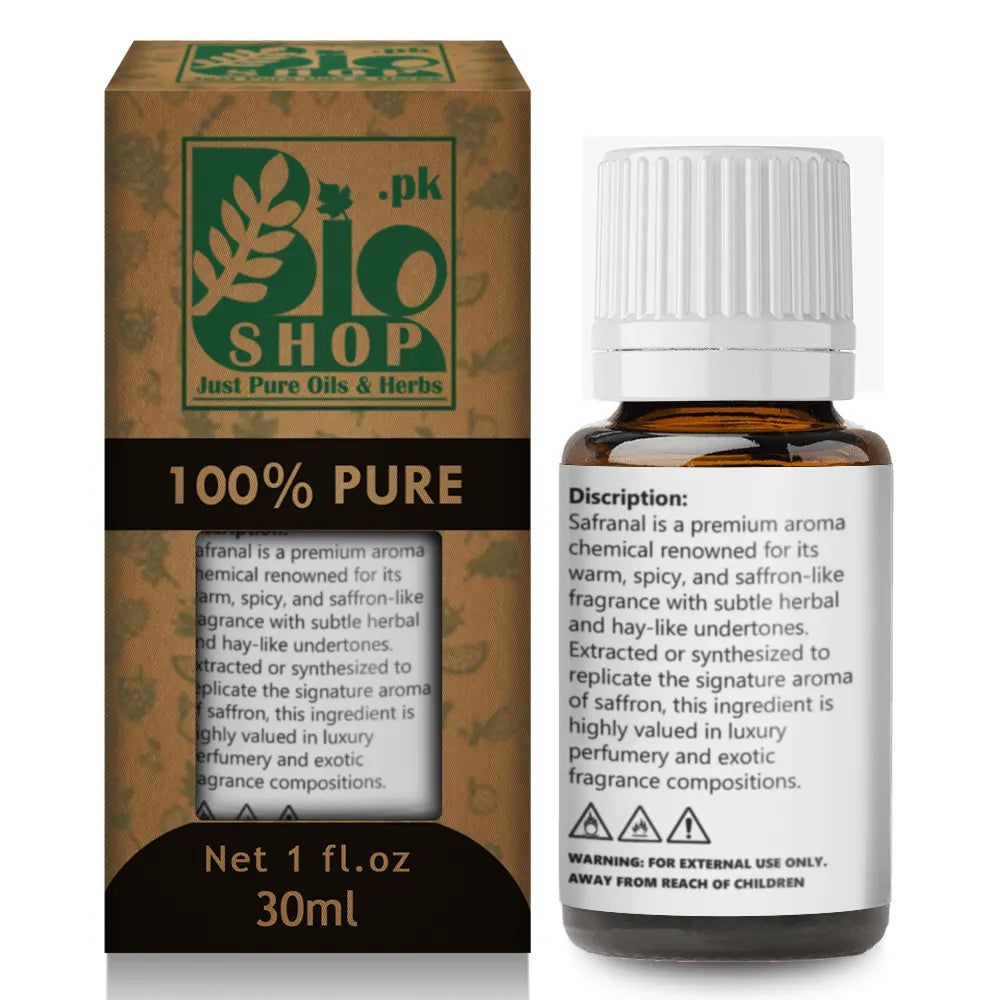Bio Shop
Safranal
Safranal
Olfactory Notes: Saffron · Warm · Spicy · Honeyed · Dry · Woody · Leathery · Floral
Couldn't load pickup availability


Explore
Information About Safranal
Key Features
- Warm, spicy aroma of natural saffron with leathery floral depth
- Ideal for exotic attars, amber accords, florientals, and oud-based perfumes
- Powerful even in low percentages—used for both warmth and signature
- Enhances richness and sensuality in floral, wood, and leather notes
- Suitable for alcohol- and oil-based perfumes, roll-ons, and incense pastes
About Safranal
Safranal is the key aroma compound responsible for the warm, spicy, honey-like scent of saffron. It has a dry, leathery-floral, slightly woody character, often used in perfumery to create oriental, spicy, and luxurious floral blends. Safranal brings instant depth, warmth, and exotic elegance to oud blends, amber florals, spicy leather perfumes, and high-end attars.
Found naturally in saffron spice, it’s highly diffusive and powerful, even in trace amounts—ideal for sensual, mysterious, or Arabian-style compositions.
Technical Data
INCI Name: Safranal
CAS Number: 116-26-7
Molecular Formula: C10H14O
Appearance: Pale yellow to yellowish liquid
Odor Description: Warm saffron, spicy-honey, dry floral, slightly woody
Purity: Typically 95%+
Boiling Point: ~144°C
Flash Point: ~65°C
Density: ~0.98 g/cm³
Solubility: Soluble in alcohol, DPG, and oils
Recommended Usage Level: 0.01%–1% in final concentrate
Category: Spicy Oriental Modifier – Heart/Base Note – Perfumery Use
Application Tips
Use 0.05–0.5% to create saffron-inspired warmth and depth in floral, oud, amber, and musky blends.
Pro Tip
💡 To add luxurious saffron warmth to your perfume 🔥🌸, use 0.05–0.5% Safranal in oriental or floral oil perfumes.
🪔 Blend with rose, oud, or amber for deep Arabian-style richness.
🌼 Pair with violet or jasmine to enhance spicy floral elegance.
🧴 Add to leather or tobacco notes for niche-style intensity.
🔄 Let the perfume age 7–10 days for full bloom and balance.
⚠️ Use very sparingly—Safranal is potent and can dominate delicate blends.
FAQ
Q1: What does Safranal smell like?
It smells like true saffron—warm, spicy, slightly honeyed with leathery floral nuances.
Q2: Is it found naturally or synthetic?
Safranal is a natural component of saffron but is also used in its synthetic form for perfumery due to cost and consistency.
Q3: What styles of perfume use Safranal?
Best in oriental, floral, spicy, oud-based, and niche luxury perfumes.
Q4: Can I use it in oil-based perfumes?
Yes! Safranal is soluble in alcohol, DPG, and carrier oils, making it suitable for attars, roll-ons, and incense.
Q5: What does it blend well with?
Pairs well with rose, oud, violet, amber, musk, leather, and balsams.
Documentation
Upon request, we will provide.
Where Can You Safely Use Safranal?
Discover how Safranal performs across different applications—rated for safety, stability, and effectiveness.



